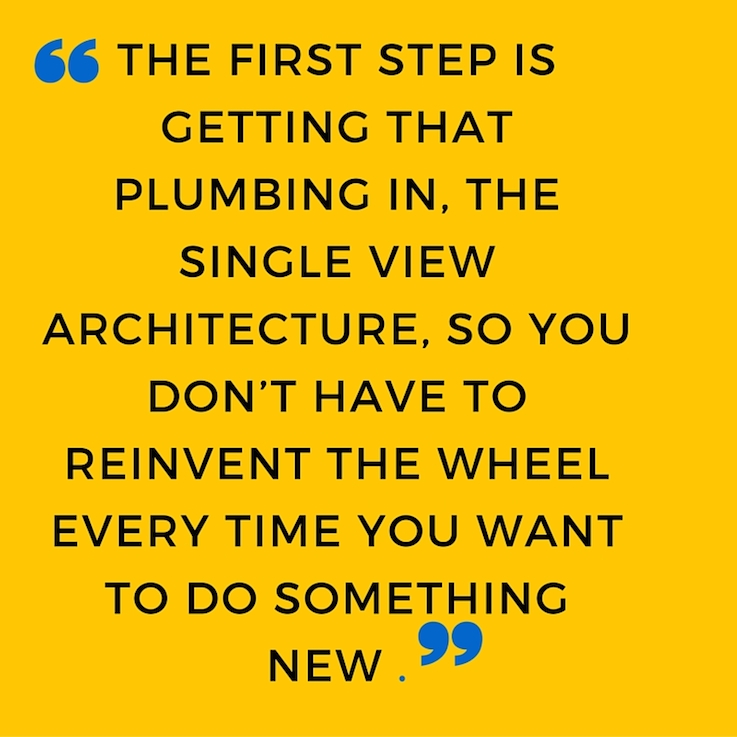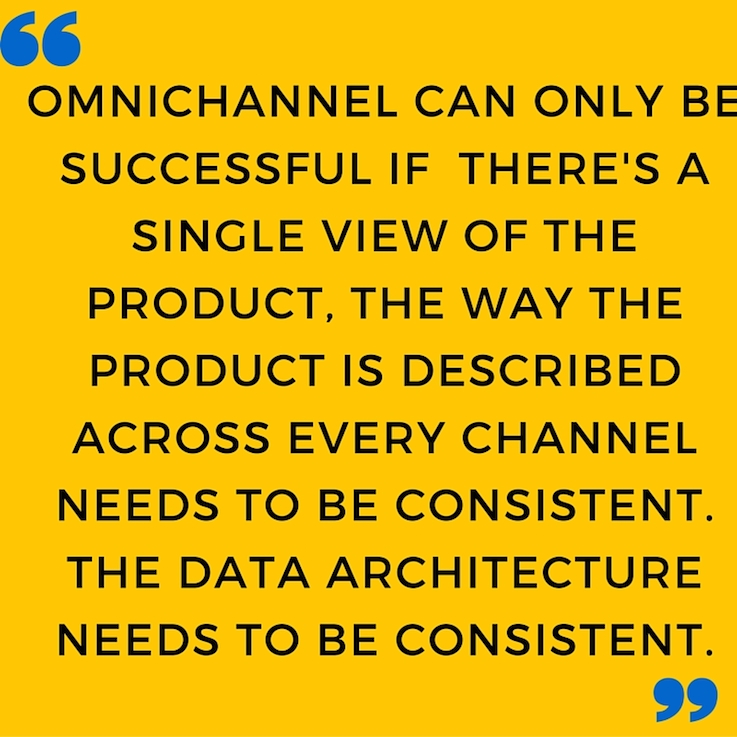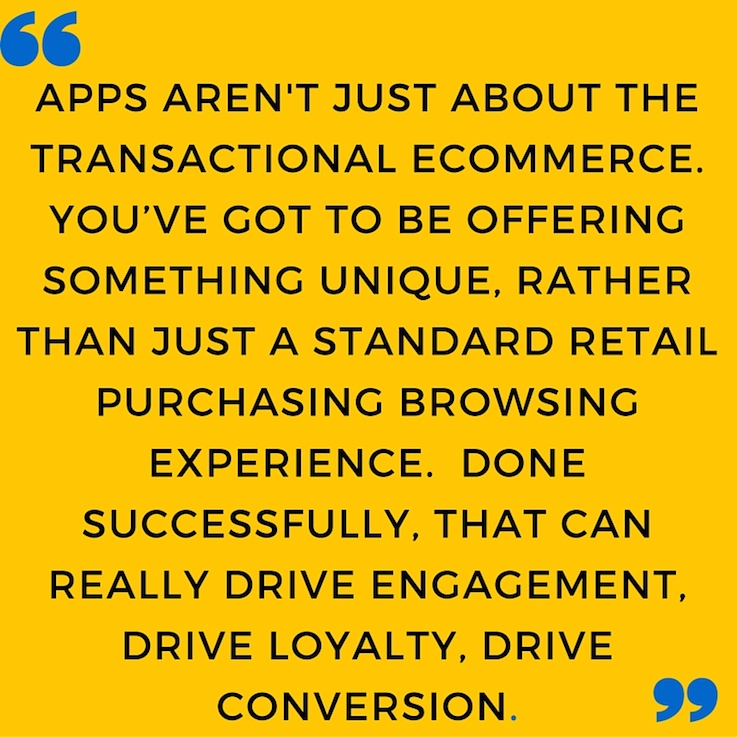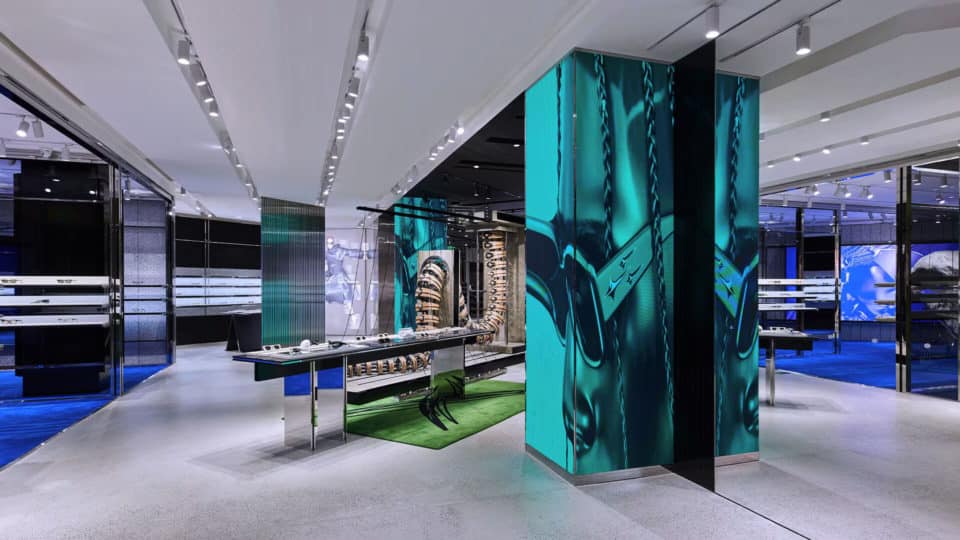Mark Adams of Validify on innovative retail tech and the value of Single View Architecture
Validify is a consultancy which connects innovative retail tech companies with the wider retail system. Cate Trotter of Insider Trends spoke to Mark Adams, Validify’s founding partner about the main issues facing tech in retail today and the importance of Single View Architecture in building a solid base for the future of retail.
Tell us about your work with Validify.
We work with large grocers through to niche pure play retailers through to multichannel UK based retailers, across fast fashion, grocery, telcoms and media entertainment. On the Validify side, we tend to work with the latest innovative technologies. Often companies that are either Series A funded or have just come out of a seed funding round and are now looking to take the business to the next level.
Validify offers a unique view because we built a company that did ecommerce implementation and, as that grew in scale and became omnichannel, the things we were touching were moving away from ecommerce and were moving into the systems and processes of the store. Retailers still have very disjointed systems and processes and we help develop a strategy around solving that problem. We enable them to have, as we call it, “Single View Architecture”.
SINGLE VIEW ARCHITECTURE
We want a single view of the data. We want to master that data in one system, but also to make the data available to other systems that require it. Unless retailers solve that problem first, then the concept of implementing new technology to solve a specific problem gets really complicated. They end up with this spaghetti mess of systems and processes that don’t properly work. They need to talk to each other, while all that data is replicated in the system that’s supporting the sales, service and all the in-store transactions. The processes are replicated in different systems. Once the system is stable, and we’ve got a view of where all the data sits, you can bring in the really cool tech to do something in store around clientelling or mobile Point Of Sale or whatever it might be, but you’ve got to get the nuts and bolts of the plumbing right.

Is that why you think a lot of technology in stores doesn’t really work at the moment?
Absolutely. You’ve got to have real time inventory in your store to make omnichannel in the store work in real time. Not just a reference to the inventory. That’s a thing across retail estate, every single store in your warehouse, internationally wherever. That’s got to be key, and that’s got to be in real time. Without that, you don’t know where your stock is, you can’t offer the customer the option of going down the road to pick it up from somewhere else, because you don’t know whether the stock is going to be available or not. And, in certain retail segments like luxury where you don’t hold hundreds of an individual product, that’s critical. So yes, solving that problem first is absolutely key.
I take it that Validify’s model is funded by the people who want more jobs from big clients. That’s surprising, because surely you and the retailers want the best tech options?
We thought long and hard about coming at it from that angle actually. The challenge that we come across working with our clients is that retailers are bombarded by tech and they don’t really trust it often. I was speaking to one CEO of a major retailer recently who said his business is taking 150 calls a day from retail tech companies, which means they basically just put up their the gates and don’t let anything through. That means they not really taking advantage and not able to spot where this new tech is coming from and what’s the best tech and what’s highly curator and what’s relevant.
We decided that model for Validify was to work with tech companies, because we not only work with tech companies just to introduce them. We work with tech companies to help grow their business, to validate the proposition. We work with them to support them – introducing them to the right people and the right other technology that they will need to integrate into a retailer’s ecosystem. So there’s a lot of kind of work we do before we even introduce them to a retailer.
There are two ways we introduce them to retailer: either via Validify’s retail panel, which now is 30 plus retailers that meet every couple of months OR if we are on the ecommerce side, running technology evaluations. We’ve got a really low level view of what’s going on in specific retailers environments and what their challenges are. And we’re able to say: “Well, actually Validify’s working with or aware of this technology that might be a really good fit” and we can introduce them through that way.
At the moment, I don’t think retail clients are willing to invest in a model where they pay to see what’s out there. They’re being bombarded all the time. I think the key is to curate the most relevant technology to what their challenges are.
TODAY’S RETAIL TECH CONCERNS
Does the retail panel talk to you about their concerns? If they do, what are they talking about at the moment?
Yes, they do. And it’s key for us to really understand those concerns. To pick the top three challenges, firstly I would say where technology is having the most traction is in-store Point Of Sale, mobile Point Of Sale or technology that is supporting the in-store transaction.
The second area really is around highly personalised omnichannel technology – technology that can be deployed on the website or in-store to support much deeper personalisation of the customer experience.
The third, in terms of the tech we’re working with, is business is involved in analytics and optimisations. Understanding what’s going on across all the channels and being able to join that data up from an analytics perspective to provide the real insight into actually what’s happening.
If you were to look at the Validify’s client base, 80% of the concerns sit within one of those three.
INNOVATIVE RETAIL TECH CLIENTS
What are some of the Validify clients you’re most excited about at the moment?
Again, to pick three, one is Alphapay. It’s a typical payment gateway, but they cut out the need for the back office merchant relationship and simplify that whole process. They can go to all of the banks the clearing banks, sort out those relationships in each of the territories and get the best deals, rather than you having to go as a retailer to each of them and set a banking intermediaries in each of your territories. No other payment gateway is doing it that way so it’s an innovative approach to solving the problem of how to take payments.
The second is a business called Intelligent Reach. They have a platform around solving two things: the data connectivity into different systems and third parties. They are able to push that data out in a very agile way to other systems that need the data to support affiliates, to support omnichannel-retailing marketplaces, say. As I said in the beginning, one of the biggest challenges that retailers have is the access and the consistency around their data. If you could solve that problem easily then you solve one of the key integration challenges.
The third is Photospire. Photospire allow retailers to create personalised video for their customers at scale, just using existing media assets and data. Personalisation and video are proven methods to improve engagement, but traditionally video is expensive to produce. Photospire makes it very affordable and the impact on customer engagement and conversion is exceptional.
How does Validify decide what tech companies you work with?
There are business that, even if they provide great technology, are not particularly well funded enough for us to take the risk of introducing to retail clients – there’s a big risk around them deploying it. The business doesn’t have the right people or maybe the right technology strategy. Those two reasons particularly are why we would turn away and not work with certain businesses.
We tend to work where we see the biggest need in the three areas I talked about earlier. We’re seeing a lot of tech, for example, around algorithms based on clothing’s sizes and in-store, but the uptake and use of it is not particularly great by retailers. We want to introduce tech that will introduce an extra capability that they don’t have, either a gap that’s there today or is going to be able to drive significant incremental revenue or conversion rates across their business.
Are there common themes in the ways you help tweak these tech companies?
Absolutely, the biggest challenge that we come across is the market validation piece we do up front with these tech companies. And what we find often is that they have a great product but their messaging to the market is not right. They’re not addressing the challenges that some of these retailers are having or that people within these retailers operating certain parts of the businesses are actually having day to day. There’s a misalignment between the messages around the technology and the problem it is solving. We’re very good at working with these tech companies to redefine their messaging and redefine their target audience based on where we thing the best fit is.
The second continuous theme is understanding the retail ecosystem and the other players within that system that they have to become friendly with or have to partner with in order to get their technology deployed. For example, many retailers hate touching their tills, and often the legacy systems that have been there for many years. They need to integrate into that ecosystem, become partners or friendly with the system integrators that are working with that particular retailer and that they want to deploy their tech into, When the system integrator becomes interested in deploying it because they understand what technology is trying to solve, that’s really cool. It’s great to be able to do that.
The third theme is business development. They’ll have a founder that built the tech, or a guy that’s invested in this technology and got some initial funding but they don’t really understand how they go to market. So we often help again with that, particularly technologies coming into the UK from outside. We’re working with a couple of Israeli start-ups at the moment and obviously US established technology companies that want to enter the UK market so we can help them do that as well.

SUPPORTING OMNICHANNEL RETAIL
What do you think the most innovative omnichannel brands will be working on this year?
This is really a difficult one because I still think that, most of them (not all) have major problems with their overall architecture meaning they are not able to properly support omnichannel retailing. There’s not a single view of the customer so they can’t target, market, sell to and service consistently wherever they see that customer. And there needs to be a single view of the product, the way the product is described across every channel needs to be consistent. The data architecture needs to be consistent – there’s a period for many major retailers of getting that right.
I didn’t answer your question but, I think that there’s a level of what we call replatforming that needs to happen over the next 12 months to two years to give them the framework to be able to go and innovate quicker test, fail, if necessary, and be successful with new technology – if, as we were talking about earlier, they’ve got the plumbing right.
What do you think about technology continually leapfrogging itself? Take apps – I still haven’t seen one working beautifully in stores – and people are talking about taking the app out. How do you talk to retailers about making sure their investments remain relevant?
It comes back to this architecture and technology infrastructure. Their architecture should enable them to see the data in real time across all of their core systems, they should be able to develop in an agile way, and quickly have more control over their own destiny, so that they can decide, “I can have a team working within my IT organisation that’s really agile, that’s really responsive, that integrate this new technology in a matter of weeks, rather than putting it on a road map where it’s not going to get touched or looked at in six months.”
That’s one of the biggest challenges for mid-market retailers. The top 10 retailers are probably already doing this, but the smaller ones don’t have the resources or skills available to them to be able to take more control. That’s the first step – get that plumbing in, the single view architecture, so they don’t have to reinvent the wheel every time they want to do something new. Then they’re able to take advantage of all these great tech.
APPS AND THE FUTURE OF RETAIL
What do you think the most innovative retailers will be offering in five years’ time?
I actually think apps will be the future. When they first came along, a lot of retailers jumped on the bandwagon and built these apps. But they didn’t invest in them in the same way. They didn’t drive consumers to those apps in the same way then they spend money on driving consumers to their websites. Then responsive web design came along as a way of very easily manipulating the look and feel of the mobile sites without too much investment. And that’s taken over as the standard way that retailers engage consumers.
But Amazon is a great example – who shops on Amazon mobile web? They’ll all use an app. I use an app to do 80% of my shopping on Amazon. It’s the biggest marketplace in the world, something like 25 % of all retail ecommerce retail transactions in the UK happen by Amazon. Their app strategy is fantastic. Retailers have to look at that and work out how they replicate a strategy with apps: driving consumers to their app and building loyalty within that app.
It’s not just about the transactional ecommerce. You’ve got to be offering something unique which is suited to an app, rather than just a standard retail purchasing browsing experience and, done successfully, I think that can really drive engagement, drive loyalty, drive conversion, with an app strategy. And I definitely think in the next 5 years the major retailers certainly will all have apps and I would bet money that their apps strategy will be delivering more revenue than a mobile web strategy.
Amazon works because you are interacting with it so frequently, but that’s the exception. What, say, if you wanted to buy a table? Would an app work then?
Then it comes down to what the service is, what you are providing your customers within that app. It might be less about the transactional services of browsing and purchasing and more about how you get serviced. It might be how you pay; it might be how you redeem your loyalty points or how you get rewarded for purchasing with that particular retailer. I think that those areas will be where apps are able to provide a much better experience in a single application, if you like, rather than having to phone a call centre.
That’s a different system as far as the customers concerned. It doesn’t offer the same amount of same information around all my purchasing, loyalty, browsing, and payment behaviour. But being able to provide that within one consistent format. And it might not mean that every retailer has its own app – what about someone like Uber or Air BnB disrupting that market, aggregating all of that capability within an app for retailers in one consistent way?

ECOMMERCE MARKETPLACES
Any other predictions for the omnichannel phase?
Yes, I think every retailer, every major retailer, even every mid-market retailer in the UK will have mobile POS capability within 5 years. And it won’t just be a standard payment method, but the multitude of different payment methods all being serviced via this mobile POS capability in-stores. Customers will pay however they want and they be able to do it wherever they want in-store and I think that will be mainstream within five years. That’s my single biggest bet on what’s going to change in retail.
I think marketplaces in terms of ecommerce are becoming more and more prevalent. Such a huge amount of transactions are already managed by these market places and I think they’ll continue to eat market share from all the major retailers, or certainly be another channel that retailers can sell through. And sell through quicker. We expect to see many more marketplaces and maybe more market places that are specific to the segment. At the moment you have Play, you have eBay, you have Amazon. But I think they’ll be an upstart of new marketplaces which service a specific market segment like luxury or fast fashion or cosmetics. And these will be the go to places where consumers buy certain types of products.
Luxury will need to be a very nice marketplace! There are a bunch of market places out there already but it’s the uptake that doesn’t seem to be there yet…
So, yes for luxury, retailers tend not to like marketplaces. They think it devalues the brand. They don’t want to lower the price unnecessarily, so eBay is not the right place to sell some luxury product for instance. What type of marketplace specifically offers that luxury experience? I think retailers would have less of an issue with that. We came across a tech recently, Open for Vintage. It’s a marketplace for vintage product, vintage of all sorts. Old furniture but also clothing as well – I got a feeling that’s where the market might be going for ecomm as well.
What three brands or thinkers really inspire you?
In terms of a brand that are doing omnichannel really well I would say Schuh. They don’t rely on a big outside systems integrator to develop everything for them. Their internal team is really strong and they are able to innovate very quickly. This is really where I think lots of retailers need to get to – it’s less about the type of technology that they’re deploying but actually is their ability to react quickly, to develop the pace and then implement new things and have this consistent view of product to customers and inventory across all of their stores. Whenever you go into a store, there’s multiple ways for you to buy, either via your own app by their apps and the data is all pretty consistent. They’ve got a really good omnichannel experience and they’ve done that off their own back by having a really strong internal team that deliver that.
In terms of mainstream technologies, I have to say IBM. We have lots of long standing relationships with tech vendors but what they’re doing is saying they’ve got a commerce engine and that’s what they’re trying to sell predominantly right and that’s how they go to market. But their proposition is much less about the commerce engine today but more around the peripherally technology that they acquired over the time and a lot of this is in personalisation as in analytics as in data integration. Or that they partner this with their ecosystem to solve those problems. They’ve been really forward thinking about how they do this, they don’t want to lock the consumer in and force them to buy everything from us – they’ve kind of said, “No actually there’s some great tech out there that we’ve acquired over the time or that we’ve partnered with”, and they have a view and a strategy on that how that can be deployed. From a technology company, it is refreshing, quite unique, and for them might be how they continue growing their business.
The third example would be from tech innovations and who do I admire there s anybody that can create a new business model through a new way of using technology. Facebook, Uber, Air BnB – the technology has been around for years it’s the implementation of that technology to provide consumers with that completely different disruptive experience is really interesting.
Is there anyone close to that in the retail space?
One of the companies that we came across recently is called YReceipts. When I first got introduced to their tech digital receipts, I thought, yes everyone will be doing it in five years’ time. But what’s really interesting about their technology is not the digital receipt actually. It’s the way that –without any integration – they can basically see every transaction in the store. Associate that transaction to a customer ID and then you’ve got a single view of all of your customers and you’ve achieved that with virtually no integration.
The big thing that’s stopping retailers get a single customer view is that they have to re-imagine their entire architecture. In larger retailers, that’s massive projects costing millions. But that’s actually where technology can be really disruptive. I think if you look at what he’ll be selling a few years’ time, it won’t really be digital receipts, it would be access with zero integration to all of your customer data in a single place. That’s the really clever thing about what they’ve done, while typically everyone else is kind of saying we’ve got integrated till systems. It’s deployed remotely with virtually no integration whatsoever, so technology that’s doing similar things that’s kind of frictionless is where I think the future really is.
Thanks Mark!



